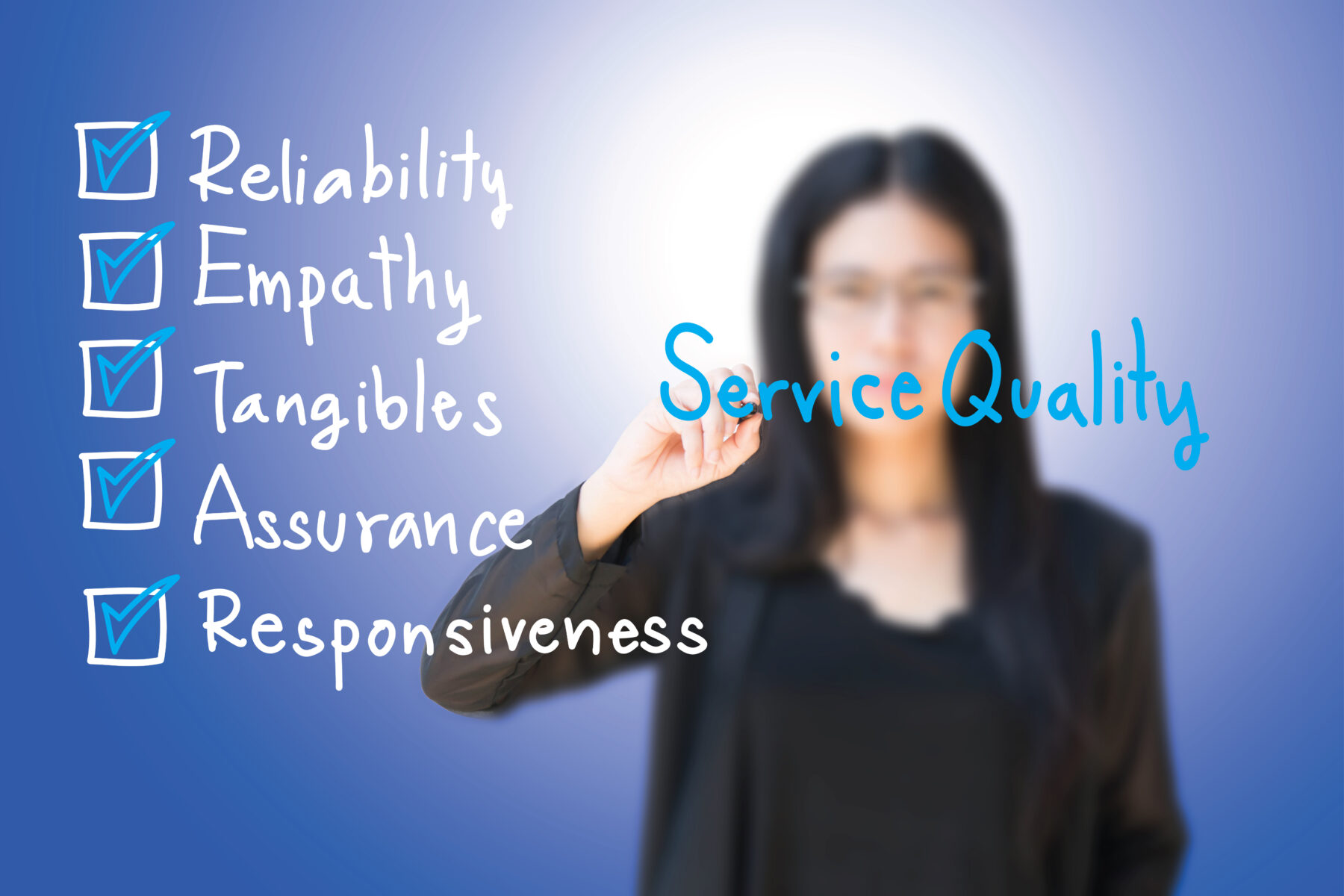By Kelly Hebert, First Vice President, Sales Operations & Marketing

How many times have you heard the phrase, “We have great customer service?” What does this mean exactly? Is there a proven formula that shows empathy + smiling through the phone + knowledge = happy customers? I’m sure a Silicon Valley startup must be working on an app and an algorithm for this, right?
It is difficult to grasp what constitutes great customer service because everyone boasts that they have it. I believe we need to rethink what great customer service is because the phrase has lost its meaning. When I hear that a company has great customer service as a part of their tag line, I am skeptical—I have heard it before, and I have been disappointed. Too often there are complaints about a terrible customer experience, and we hear very little about what companies are doing to make sure their customer service is truly awesome.
This prompted me to do a little research. I wanted to quantify the immeasurable parts of customer service, so I performed some unofficial Google research on companies that are known to have the best customer service. The findings were fascinating. What people perceive as great customer service may be difficult to measure or replicate. These were some of the recurring themes:
- Being polite
- Professionalism and courtesy
- Variety and centralization
- The feeling of being pampered
- Reliability
- The people that work there are happy
- Accuracy
- Caring about customer needs
This is a diverse list to master, and a company may need to hire a psychologist to create a training program for human resources teams to do so.
Great customer service may not be found in a call rubric, phone metrics, or a customer survey. The great customer service attributes uncovered were based upon a customer’s subjective opinion of how they felt after they interacted with the company. How can a company that is seeking an enhanced customer experience train their account managers to leave their clients with this feeling? The answer may be better explored in how to connect with your customers. Connecting with your customer allows them to be the recipient of your politeness and professionalism, allows them to feel that your company actually cares about the results that matter to them, and how the end product is used. Feeling connected may also allow for second chances. If there is an interruption in service or an error in the product, a customer that feels like the company is connected to their satisfaction and understands their needs may be more understanding of an error and work through the concern with the company.
Customer service is about the connection. No matter the size or type of customer you have, it is a theme that translates to every business and every industry—connect with your customers and you can keep them happy and retain them. Here are a few ways you can connect with your customers.
- Connect by understanding the effect of your service or product. Account managers and customer service representatives need to understand the effect of the service or product has for your client. If there is a problem on a report, a payment, or a shipment, your customer-facing agent needs to understand how this will affect the client. The effect of a product is important for your employee to understand how your client uses the service and benefits from it. Train your employees to understand the consequences of mistakes, the cost of errors and the ramifications from different stake holders—so that a response of “I’m sorry that happened” has more connection and meaning. This lets the client know you are going to do everything you can to correct what happened AND work with the appropriate teams to prevent this from happening again.
- Connect by understanding the client’s business. Many service providers offer products to more than one type of business within an industry. For example, real estate services may cater to banks, credit unions, loan servicers, and property managers— these are all unique businesses that may benefit from the same product. Train your customer-facing employees to understand the differences and track the client type in your CRM software so employees can better connect with lingo and jargon, business terms, and maybe even cross sell complimentary products. Employees that know how the customer is using the product will be better able to assist with specific solutions for that business and connect with the clients on a more personal level.
- Connect by cross training. As companies grow, the need to functionalize forces divisions of people into teams and departments. Naturally, this causes teams to work in silos with very little understanding of how their process is connected to the rest of the business and to the client. There are enormous operational benefits of cross training your employees, but there is also a benefit to the customer. Cross training ensures continuity of the customer experience across multiple lines of business. The customer facing employee should have enough of an understanding of other departments and verticals that they can offer assistance and high-level support even if the client’s question or concern is outside of their role.
- Connect with regular communication. It could be a quarterly phone call, a newsletter, whatever it is make sure there is consistent outreach and communication with your clients and be available when they need you. Clients that have regular communication will not be shy about speaking up when there is a problem and keeping a strong presence and brand will help them remember your company when they are looking to upgrade or add more services to their business. Without regular communication, you may be forgotten, or worse, they will not think to call you when there is a concern, and they may silently take their business elsewhere. Any client that has not received communication at least one to two times a year should be flagged for review and should receive a wellness check for their satisfaction.
- Connect by embracing competition. Competition can be healthy; it keeps us sharp and reminds us that there are other options for our client so we must continue to enhance and improve services. Train account managers to really listen, often the client uses multiple vendors or has used your competition in the past. Make note of any experiences they share on the call and share the feedback to identify if there is anything to be learned about how to improve existing offering and increasing a competitive advantage. Never speak ill of competition to your client, show them your openness to listen and your willingness for improvement.
- Connect by showing empathy. No one likes to feel like their issues are not important. When a client calls to voice a concern about a problem, it is very important to make sure customer representatives understand how to be empathetic. It can be tiring to hear complaints all day, but that may be the only interaction your customer has that year. Turn the opportunity into a positive experience for the client by showing empathy, connect by understanding that what they are experiencing is inconvenient and ensure that the customer feels important and valued. Make sure the client leaves the interaction remembering how helpful the company was and what was done to resolve the issue rather than focusing on the mistake and how it was handled.
- Connect by showing appreciation. Say thank you. It sounds so simple, but it is not often practiced. Send a holiday card, recognize how long a client has used your services, say thank you for their continued trust in your product. Say thank you for their business, thank you for continuing to be a client, thank you for calling about an issue that will allow you to fix it for other customers.
It is not unusual for the bulk of your client contact to arise only when there is a question or a problem. Even though every company loves positive feedback, it would be rare for a client to call just to give you a high five and say how happy they are with the services. No matter what the exchange, do not let your client hang up the phone thinking, “that was terrible customer service.” Teaching and mentoring client facing teams to exhibit behaviors where they connect with clients will help your company reach the immeasurable or subjective feedback that everyone strives to see on a satisfaction survey. The customer service representative is the first point of contact, the customer’s connection to your organization. This is why it is imperative that each of your employees connect with the customers and understand their business. There are several tools to ensure your customer service efforts are what you want them to be including recording calls, score cards, and surveys to provide helpful feedback. These tools will help you determine where you might need to further train employees. But nothing will substitute a well-trained, client-facing employee that can connect with a client; they can make the difference between creating a raving fan or an unhappy one.
This article originally appeared in the October 2019 issue of DS News


